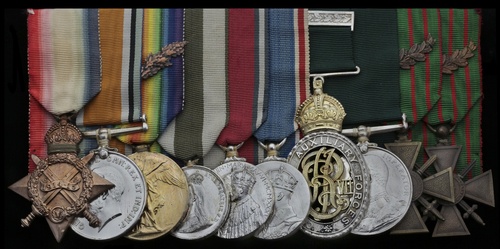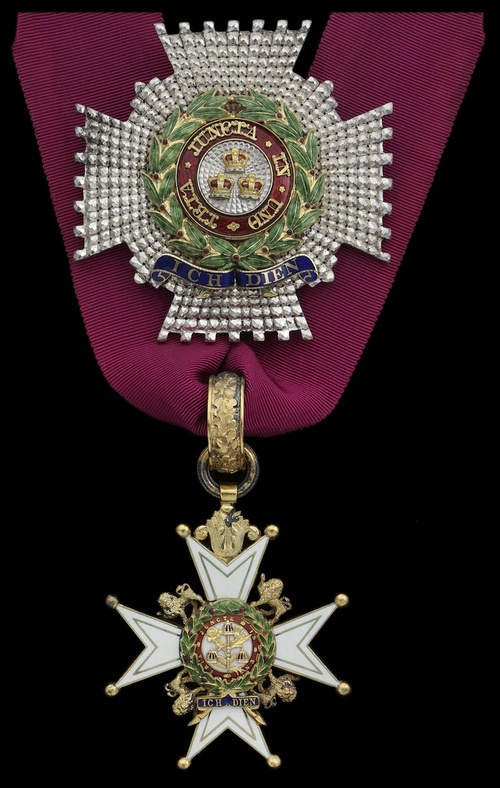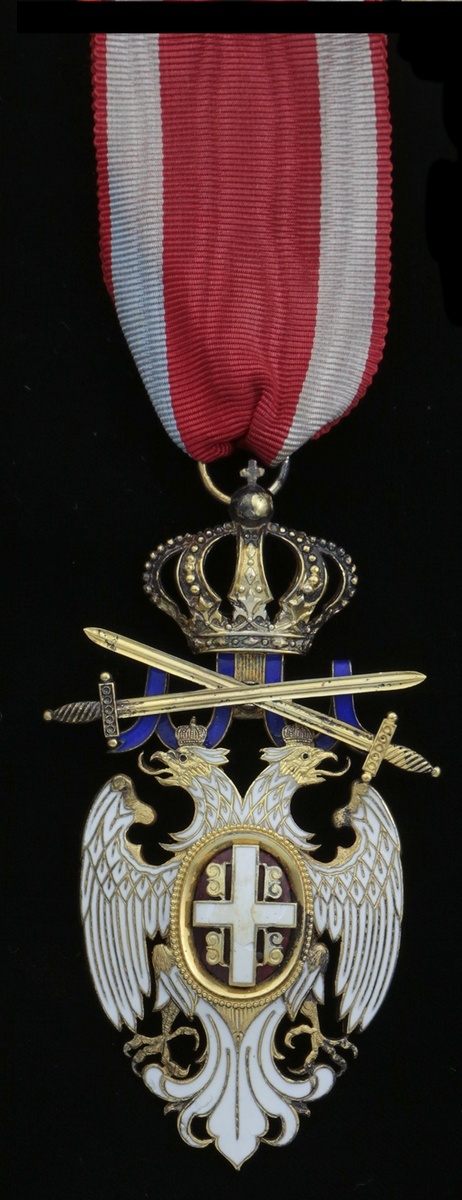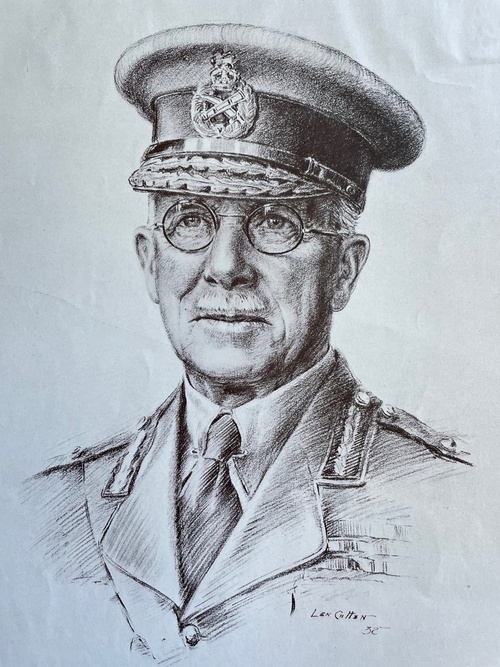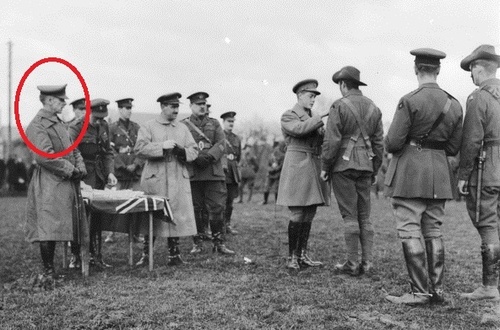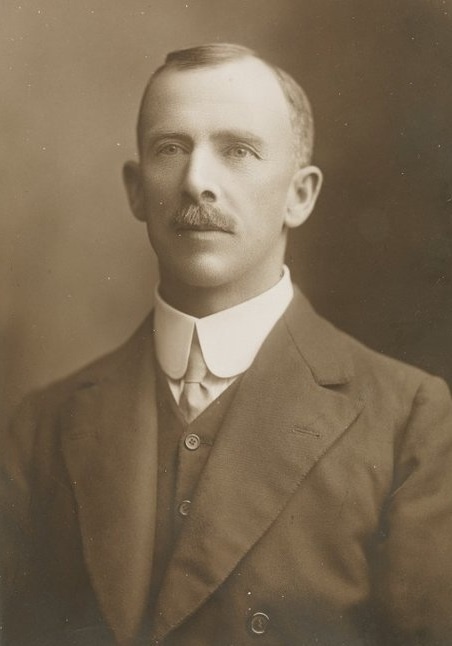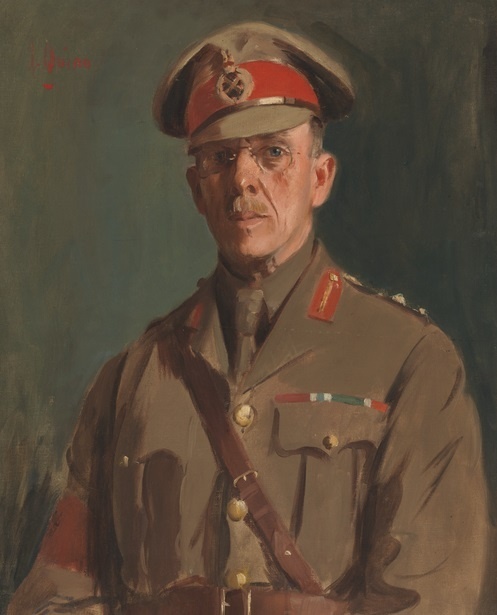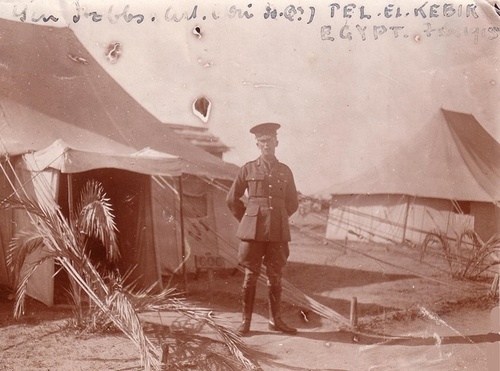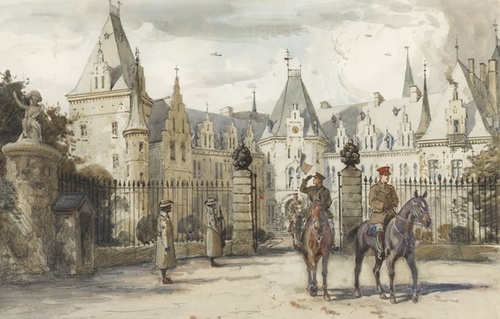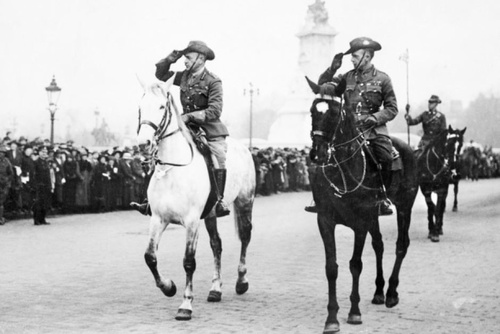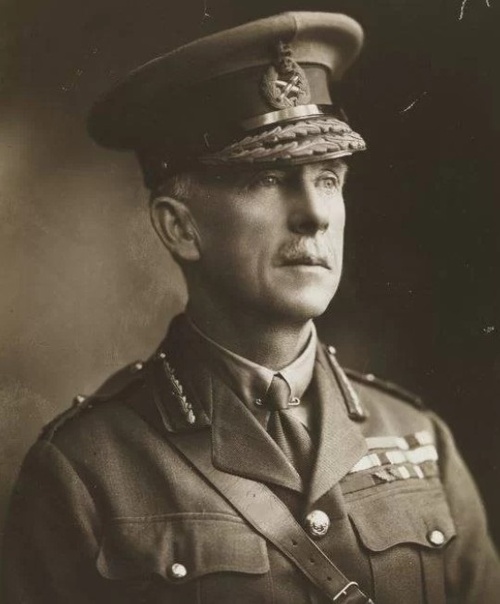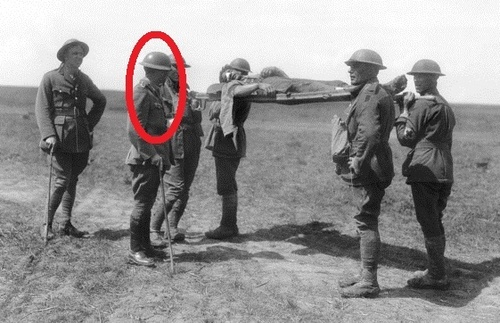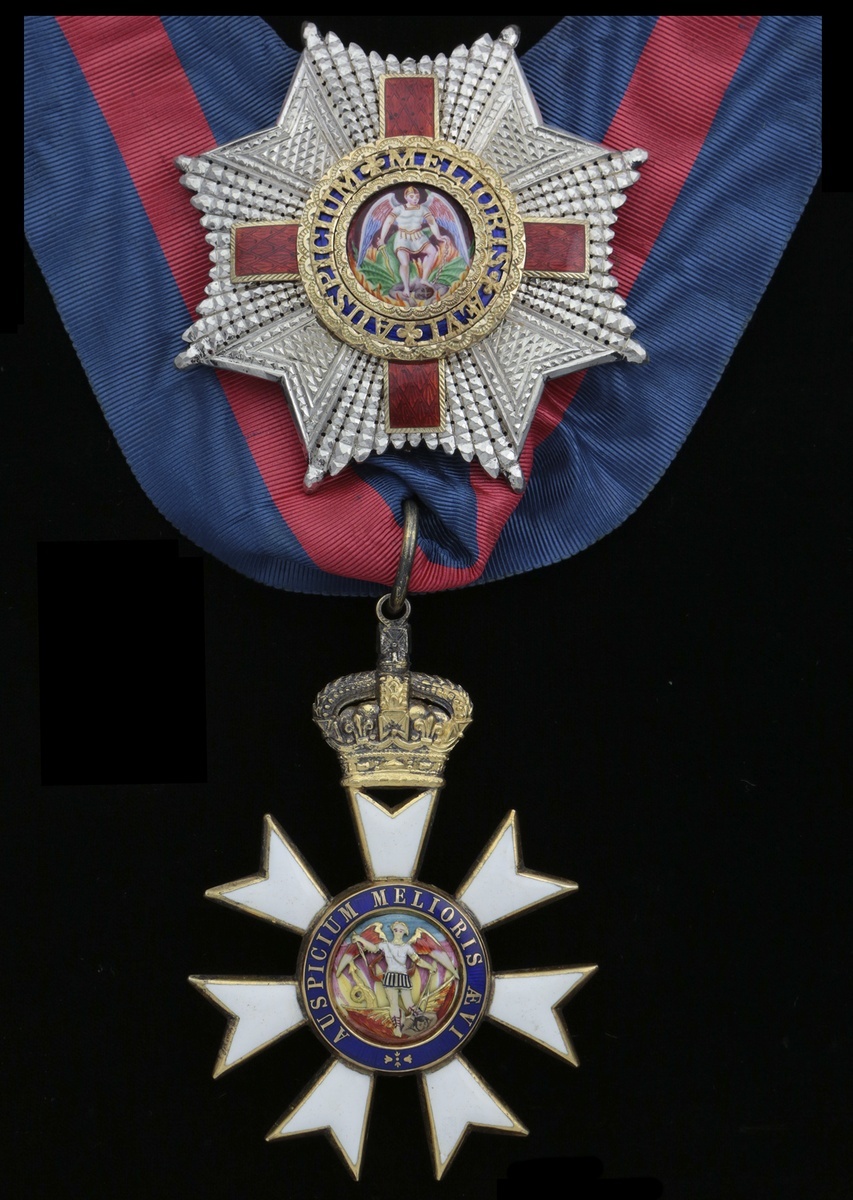Auction: 22002 - Orders, Decorations and Medals
Lot: 113
Sold by Order of a Direct Descendant
'General Hobbs was, first and foremost, a lover of the Australian soldiers, and their devoted servitor. He belonged to that type of citizen-soldier who, before the War, had spent long years in preparing himself for a day when his country would require his military services.
Like several of the most successful of Australia's Generals, he had specialised in Artillery, and was, in fact, selected as the Senior Artillery Commander of Australia's first Contingent.
That fact alone was the stamp of his ability. While he would be the last to lay claim to special brilliance, or outstanding military genius, he nevertheless succeeded fully as the Commander of a Division, by his sound common sense, and his sane attitude towards every problem that confronted him. He possessed also the virtue of a large-hearted sympathy for all subordinate to him; and that gave him a loyal following, which carried him successfully through several great crisises in the affairs of the Fifth Division.
...I was compelled to harden my heart and to insist to him that it was the imperative to recognise a great opportunity and to seize it unflinchingly. His response was loyal and whole-hearted. His Division followed the lead which he thus gave them, and he led them to imperishable fame.'
General Monash on Hobbs, in The Australian Victories in France in 1918
The historically important K.C.B., K.C.M.G., V.D. group of eleven awarded to Lieutenant-General Sir J. J. T. Hobbs, Australian Imperial Force
A keen Artilleryman, Hobbs was a pre-War Officer in the Western Australia Artillery and was notably selected to Command the Artillery of the First Australian Contingent; he landed at Anzac Cove on 25 April 1915 and was present throughout - save a few short days invalided due to dysentery - that seminal period until dragged from his Command by a severe bout of jaundice and colitis on 6 November 1915; he was duly advanced Major-General and awarded the C.B. for his part
Hobbs further distinguished himself on the Western Front with the 1st Australian Division during which he commanded the Australian Artillery when Pozières was captured; he later took command of the 5th Australian Division, with which he shared in the famous actions of Polygon Wood, besides planning the Capture of Villers-Brettoneux and leading the famous breaking of the Hindenberg Line
Hobbs ended the Great War taking command of the entire Australian Corps from General Monash and welcomed Edward, Prince of Wales to his chateau for Christmas 1918
One of the most famous Australian Commanders of the Great War, Hobbs was also a pre-eminent architect whose designs remain across Western Australia today - no more so than the Western Australia War Memorial
The Most Honourable Order of the Bath, K.C.B. (Military) Knight Commander’s set of Insignia, by Garrard & Co., comprising neck Badge, silver-gilt and enamel; Star, silver, silver-gilt, and enamel, with gold retaining pin, in its fitted case of issue, with neck ribands; The Most Distinguished Order of St. Michael and St. George, K.C.M.G. Knight Commander's set of Insignia, comprising neck Badge, silver-gilt and enamel; Star, silver, silver-gilt, and enamel, with gold retaining pin, in its fitted case of issue, with neck ribands; 1914-15 Star (Colonel J. J. T. Hobbs. 1/Div. Arty. HQ. A.I.F.); British War Medal 1914-20 (T. Lt: Gen. Sir J. J. T. Hobbs. Aust: A.C.H.Q.); Victory Medal 1914-19, with M.I.D. oak leaves (T-Lt. Gen Sir J. J. T. Hobbs. A.I.F.); Jubilee 1897 (Capt. J. T. Hobbs. W. Aust. Artillery), contemporarily engraved naming; Jubilee 1935; Coronation 1937; Colonial Auxiliary Forces Officers’ Decoration, E.VII.R., with integral top riband bar (Lieut. Col. J. J. T. Hobbs. C.M.F. W.A.); Volunteer Force Long Service Medal, E.VII.R. (Major J. T. Hobbs. A.F.A.); France, Republic, Legion of Honour, with Palme upon riband, reverse dated '1914-1918'; France, Republic, Legion of Honour, with Palme upon riband, reverse dated '1914-1917'; Serbia, Kingdom, Order of the White Eagle, 3rd Class Commander's neck Badge, Military Division, neck Badge, with swords, silver-gilt and enamel, with neck riband, breast Medals mounted court-style as worn by Spink & Son, traces of lacquer, good very fine, housed in an open-fronted glazed wooden display frame, with engraved silver name plaque (13)
K.C.B. London Gazette 1 January 1918. An award for France & Flanders for his command of the 1st Division, Australian Forces.
[C.B.] London Gazette 8 November 1915. An award for Gallipoli for his command of the Australian Artillery.
K.C.M.G. London Gazette 1 January 1919. An award for the Capture of Villers-Brettoneux.
Serbian Order of the White Eagle London Gazette 15 February 1917.
French Croix de Guerre London Gazette 29 January 1919. An award for the Capture of Villers-Bretonneux.
French Croix de Guerre London Gazette 5 November 1920. An award for the breaking of the Hindenberg Line.
Joseph John Talbot Hobbs was born at Chelsea, London on 24 August 1864, the son of Joseph, a journeyman joiner. Young Hobbs was educated at St Mary's Church School, Merton and displayed skill and flair in design and drawing. He took up work as a builder's draftsman to John Hurst and was also a member of the 1st Cinque Ports Artillery Volunteers, which he joined in 1883.
Australian Architect & Artilleryman
Hobbs and Hurst, who saw the potential for business in Australia, took the decision to emigrate to Western Australia in 1887. In the period that followed, having parted way with Hurst, Hobbs set up his own practice and forged his name as one of the pre-eminent architects in Perth and Western Australia. Becoming the Senior Partner of Hobbs, Smith & Forbes in 1905 he was responsible for the Weld Club, the Savoy Hotel and the Perth Masonic Lodge. He took on many further private commissions, including drawing up Samson House, Fremantle, an example of the late nineteenth century colonial style, which is a listed building. Hobbs was Treasurer of the Western Australian Institute of Architects in 1896 and was President from 1909-11.
Away from his profession, he further developed his passion for Artillery, something which would equip him well for the events of the coming years. Joining the Western Australia Volunteer Artillery as a Gunner upon his arrival, he was advanced to Bombardier and Sergeant before being commissioned 2nd Lieutenant in 1889. He was further advanced Lieutenant on 26 April 1891, Captain on 7 March 1896 and Major on 12 October 1897. He attended the Diamond Jubilee Celebrations with the Western Australian Contingent in 1897 (Medal). Given the success of his business, he was able to travel back to England in 1897 (Instruction with 68th Battery at Woolwich), 1902 (Course at School of Gunnery, Okehampton), 1906 (Course on 18-pounder and 13-pounder at Royal Ordnance College, Woolwich & at School of Gunnery, Okehampton) and 1913 (Instruction with 7th Infantry Brigade, Tidworth) at his own expense to undertake courses on the advances in gunnery. He was also present in 1913 at the Divisional Manoeuvres & Army Exercises as a Representative of the Commonwealth Military Forces that same year.
Hobbs would command the 1st (Western Australian) Field Battery from 1903 and from 1906 he was Lieutenant-Colonel Commanding a Western Australian mixed Brigade. Besides this appointment he was Honorary A.D.C. to the Governor Generals of Australia, a position he held from 1906-31 March 1917. By 1913 he was Colonel Commanding 22nd Infantry Brigade.
Into the fire - Gallipoli
With the outbreak of the Great War, Hobbs joined the Australian Imperial Force at Perth on 8 August 1914. He was perfectly positioned, with his years of experience and command, and was selected by Major General William Bridges to command the 1st Australian Divisional Artillery. Hobbs proceeded to Melbourne on 15 August 1914 to set to work. Having organised his troops, they were embarked on the Shropshire with the 2nd Field Artillery Brigade - Hobbs as Officer Commanding - and landed at Alexandria on 6 December 1914. Setting camp at Mena, his unit would have a few short months to complete training and ready themselves for when the call to the front came.
They did not have to wait long, for his unit were to be landed on ANZAC on 25 April 1915; Hobbs was one of the first to come ashore with his own unit. He was also responsible for the landing of a number of English and Scottish Howitzer Brigades, which would be manned by the men of his Command. Hobbs was to have the ultimate control of all Artillery operations on Gallipoli for this seminal period in Australian history. His own service in the period is summarised by the Australian War Records Section:
'25-4-15 Landed Gallipoli. Served as C.R.A., 1st Aust. Division. Took part in all operations in which 1st Aust. Division engaged during the period 25-4-15 to 9-10-15, including Turkish attack May 19/20 and taking of Lone Pine Redoubt, August. Promoted Brigadier-General to date from 15-8-14.'
The weight of the responsibility is recalled:
'Just prior to the landing at ANZAC, April 1915, where as C.R.A. of 1st Division, I fully realised the great difficulties and dangers ahead in landing personnel, guns and horses, and after the landing, in finding positions and emplacing guns on probably the most unsuitable and difficult ground on which field guns were ever employed. The dangerous scarcity of gun ammunition for many weeks after the landing was a constant source of intense worry and anxiety.'
That mention of the placing of guns was a bone of contention from the second the foothold was made, for Hobbs clashed at great lengths with General Bridges over the exact positioning of his guns. At one point Bridges ordered Hobbs to place guns in the front trenches on the 400 Plateau to fire at the Turks like giant shotguns. Hobbs protested, but twice carried out his orders, the gunners doing so without loss. In the end, it was demonstrated that shrapnel was ineffective against entrenchments, and Hobbs won his point. He was also able to prove that the claims that the Artillery had lifted its fire too early during the actions on the Nek was due to the watchkeeping of the Light Horsemen rather than his Gunners.
Hobbs was a man to lead from the front and did all he could to remain with his men but was struck down by dysentery, which took him off to Alexandria from 30 August-7 September 1915. On 13 October he was appointed to the Temporary Command of the 1st Division due to the wounding of Major-General Walker. Hobbs held this command from 13 October-6 November 1915. He was essentially dragged from his post on 9 November and admitted to hospital on ANZAC due to colitis and jaundice and had to be forced to be evacuated to No. 1 General Hospital, Cairo on 16 November. For his part in the Gallipoli operations, he was awarded the C.B. and Serbian Order of the White Eagle, twice 'mentioned' (London Gazette 5 November 1915 & 28 January 1916, refers) and promoted.
Second Innings - Western Front
Recovered from his severe case of colitis, he proceeded at his own expense for six weeks' furlough in England, arriving back to assume Command of the 1st Divisional Artillery at Tel-el-Kebir on 21 January 1916. The unit were employed on the Suez Defences and also used the time to reorganise and expand, before embarking for the Western Front. Landing at Marseilles on 28 March 1916, he took over as C.R.A. and was quickly thrown into the actions at Ploegsteert Wood. The summer of 1916 saw Hobbs in Command of the Artillery for the Battle of Pozieres and the capture of Moquet Farm. That period saw him also Command a Brigade of Belgian Field Artillery and the Australian Medium and Heavy Trench Mortar Batteries which showed such skill that summer.
October saw Hobbs appointed General Officer Commanding Australian Corps Artillery, only shortly interrupted by his being admitted to hospital at Hazebrouck with acute bronchitis on 25 October. He resumed duties on 11 November and held the position until 16 December, when he was appointed to the Command of the 5th Australian Division and was made Major-General on 1 January 1917.
Further laurels - Bullecourt
By the end of the month Hobbs and his Division were in control of some 10,000 yards of the line from the Albert-Bapaume Road to Les Beoufs, sharing in the actions in:
'...closely followed and severely pressed the retreat of the Germans when they fell back on the Hindenberg Line and captured Bapaume and Les Transloy [sic] and after further fighting, especially in or about Beaumetz, the towns of Beaulencourt, Bancourt, Lebuoquire, Beugny, Bertincourt, Reincourt, Villers-Au-Flor, and Velu were captured and occupied. Further heavy fighting resulted in the capture of Louerval and Dougnies with many Germans, who also sustained very severe losses in killed, wounded and machine guns.'
During the actions from 10-28 May around Bullecourt, the Division threw off attacks from the vaunted Cockchafer Regiment and also assisted the 7th (British) Division in the attack on the Hindenburg Line. They were withdrawn from the line and the 5th Division took up the attack in the Hooge Sector. Hobbs was 'mentioned' (London Gazette 1 June 1917, refers) once again and received H.M. The King for the Divisional Military Tournament at Hennencourt, Somme in June 1917.
Gallant actions - Polygon Wood & Villers-Bretonneux
The Division would go back into the line to share in the Third Battle of Ypres, taking over the attack launched by the 1st Australian Division on Polygon Wood. His Service Record recalls:
'25-9-17 Repelled German attack on our line South of Polygon Wood.
26/27-9-19 Fought Battle of Polygon Wood, in which all objectives were gained and assistance given to British Division on the right which enabled it to regain lost ground.'
The enemy lost many hundreds killed, wounded and prisoners, besides the fine haul of guns and stores which fell into the hands of the Division. The actions completed by the men under this Command were summarised:
'Polygon Wood was probably one of the most complete successes, fought under very difficult and trying conditions, achieved by any Australian Division during the War.'
The Division were placed in a holding sector for the following months and as 1918 dawned Hobbs would be elevated to a K.C.B. and earned another brace of 'mentions' for this period (London Gazette 28 December 1917 and 28 May 1918, refer).
At the time of the German Spring Offensive in March 1918, his unit stood firm in the Villers-Bretonneux-Somme Sector, withstanding a heavy gas and infantry attack which took aim at their right front and flank. Hobbs would further carve his name into Australian history for his planning of the famed Capture of Villers-Bretonneux, completed by Brigadiers Elliott and Glascow with their converging flank attacks - an event which ranks in the First Division of Australian military events. He was awarded the K.C.M.G. and his first Croix de Guerre.
The summer saw his Division take part in a number of raids and less major operations, including the taking of Morlancourt and Corbie Ridge and the actions at Hamel on 4 July. Gunner Buie of his Division is also suggested to have fired the Lewis gun which claimed the life of the infamous 'Red Baron'. During May 1918, Hobbs also invented a revolving steel cupola for the protection of Lewis and Vickers machine-guns for frontal defence. Given that the direction of operations by this time was of the offensive rather than defensive, nevertheless large numbers of the 'Hobbs Pillbox' were produced; it was highly thought of by Churchill and in October 1919 he was given a letter of thanks from the Minister of Munitions.
8 August 1918 - 'The Black Day of the German Army'
Hobbs was again to the fore during the events of August 1918, when his 5th Division shared in the breakout from Villers-Bretonneux. His Division didn't share in the taking of Mont St Quentin but Monash lavished him with praise:
'[As far as I am] concerned...the fine performance of the Fifth Division should not be underrated. The circumstances under which General Hobbs was called upon to intervene in the battle, at very short notice, imposed upon him, personally, difficulties of no mean order.'
Monash even acknowledged '...I am prepared to admit quite frankly that the demands which I had to make of him, his Staff and Division were severe.'
By the close of the operations the Allies has taken nearly 2,000 prisoners for the bag, besides 40 guns - which included an 11" railway gun and its train - and '...vast quantities of machine-guns, arms, ammunition and equipment.'
It was rightly described as '....the Black Day of the German Army' by General Ludendorf and signalled the beginning of the end.
In late September the 5th Division were again thrown into the action at Bellicourt after some three days of constant action. This saw them clear the Le Catelet trench system plus taking Joncourt, Estrees and Nauroy. The importance of their breaking of the Tunnel Sector of the Hindenberg Line for the overall fall of the German Army cannot be understated. General Rawlinson considered it the blow which finally toppled them. Once again General Monash sent Hobbs the following message:
'Please convey to the 3rd and 5th Australian Divisions my sincere appreciation of thanks for the fine work of the past three days.
Confronted at the outset of the operations with a critical situation of great difficulty and hampered by inability to make full use of Artillery resources, these Divisions succeeded in completely overwhelming a stubborn defence in the most strongly fortified sector of the Western Front. This was done by the determination and resource of the leaders and the grit, endurance and fighting spirit. Nothing more praiseworthy has been done by Australian Troops in this War.'
Hobbs was instructed to meet H.M. The King on the battlefield to describe the events and show him the ground captured. With war's end, Hobbs succeeded Monash in Command of the Australian Corps from 28 November 1918-30 May 1919. He had truly earned the two further 'mentions' (London Gazette 31 December 1918 & 11 July 1919, refers) and his second Croix de Guerre - an award for the breaking of the Hindenburg Line - besides promotion to Lieutenant-General which followed. He finished the Great War with no less than eight 'mentions' to his name.
Hobbs also had the pleasure of a famous Royal guest, with The Prince of Wales (later Edward VIII) staying with him as Staff Captain to the Corps Commander from 15 December 1918-12 January 1919. The Prince and Hobbs clearly developed a good working relationship and friendship whilst at the Chateau at Ham-sur-Heure. The pair often rode out together - a scene depicted by A. Henry Fullwood (original in the Australian War Memorial ART02451) - and they visited many of the units under his command and completed a number of investitures. The Prince presented Hobbs with his own gift and penned the following letter dated 8 January 1919:
'My dear General,
I must send you a line to thank you again for all your kindness to me during my stay with the Australian Corps & to tell you how much I enjoyed my 3 1/2 weeks with you & how I hated having to leave you all yesterday!!
It was a very great pleasure to me to have this opportunity of seeing most of the units of the Corps in an unofficial way & to get to know so many Officers & to be able to talk to so many of the "Diggers" & I feel I have made a lot of friends.
Anyhow everybody was so kind & nice to me that they've made me feel I've got a lot of Australian friends; in fact you all spoilt me so. I'm very greatful for everything!
I had a good trip to Spa were I stayed last night at Advanced HQ RAF & then flew over to Cologne this morning in a Bristol & landed at an aerodrome where an Australian Squad is & I met some of the Officers!!! I had a stroll in Cologne this afternoon which is a fine town tho. ugly from our point of view; the German population are thoroughly cowed & walk with their tails between their legs, how galling it must be for them to be ruled by us & to see our men walking about!!
There are no men in uniform tho. one sees alot of obviously recently demobilised soldiery; the women are easily the most revolting ugly crowd one ever set eyes on. I'm staying here 48hrs & then go up to Coblenz to 2nd American Army till Sunday when I return to Cologne; I will let you know about 3rd Div. later hope the Div. Arty is all right & that you'll get your well earned & much needed leave soon!! Marvellous roads here on the Rhine!!
Please forgive such a fearful scrawl but its late. Again all my grateful thanks for eveything & I remain yours sincerely.
Edward
PS I was so [underlined] pleased to be able to give all those Medals.'
Journey's End
In January 1920, Hobbs, along with Legge, Monash, McCay and White, was appointed to a committee chaired by Chauvel, to examine the future structure of the army. In 1921 he was again made commander of the 5th Division, and the 13th Mixed Brigades, holding these appointments until he retired from the Army in 1927.
Soonafter the return home from Europe, took up the mantle of memorialising the sacrifices of Western Australians during the Great War. He was firstly responsible for designing the West Australian War Memorial in Perth. Of the six Australian Divisional memorials Hobbs designed five, including that sited at Polygon Wood.
Hobbs was a keen Freemason, being a founding member of three Lodges and was Past Senior Grand Warden of the Grand Lodge of Western Australia. He was also Chief Scout of Western Australia and a founder member of the Swan River Rowing Club. His other civil appointments and associations are too numerous to list in print. He was clearly adored by those who served above, alongside and beneath him. Hobbs was '...under medium height; though not a midget; I should guess his weight as only eight stone.'
It seems fitting that the General died whilst at sea on 21 April 1938; he was en route to the attend the unveiling of the Villers–Bretonneux Australian National Memorial. The Talbot Hobbs Memorial was built just before the Second World War and has been the receiving point for the salute during the Anzac Day parade; it was also the location from where H.M. The Queen took the salute during the 1954 Royal Visit. This memorial was placed on the Western Australian Heritage register on 18 March 2005 and was recently relocated to the Supreme Court Gardens after the redevelopment of the Perth Esplanade.
The eulogy given by Lieutenant-General Sir Brudenell White stated:
'...he was not only a soldier, he was also a great citizen, and a great Christian gentleman...who knew none other than the straight path.'
Sold together with the following archive of original material comprising:
(i)
Warrants, together with forwarding letters, for the award of C.B. and K.C.B., with copies of the Statutes of the Order, 1915 & 1925, in forwarding envelope to his son.
(ii)
Warrant, together with forwarding letter, for the award of the K.C.M.G., with a copy of Statutes of the Order, in forwarding envelope to 'Major General Sir Joseph John Talbot Hobbs, K.C.B., K.C.M.G., The Bungalow, Keane Street, Peppermint Grove, Western Australia.'
(iii)
His eight Mention in Despatches certificates.
(iv)
Commissioning Documents, two as 2nd Lieutenant in the Western Australian Volunteer Force, one of which includes promotions to the reverse and as Colonel, dated 5 August 1914.
(v)
Forwarding letters and enquiries into the two awards of the Croix de Guerre, the second of which the General questioned if he was entitled to wear alongside the first.
(vi)
Old copy of Biographical details from the Australian War Records section, which provides full career references and appointments, Casualty Forms and other relevant information.
(vii)
Typed and filed record, presumably prepared after his death, together with a series of other correspondance and operational copy documents.
(viii)
Appointment as Representative of Australia for League of Nations 14th Session at Geneva, 25 September 1933.
(ix)
Five images of landing at Anzac Cove and four other wartime scenes.
Further notice should be made of The Lionheart – A Biography Of Lieutenant-General Sir Talbot Hobbs, by David Coombes.
Subject to 20% VAT on Buyer’s Premium. For more information please view Terms and Conditions for Buyers.
Sold for
£35,000
Starting price
£20000
Sale 22002 Notices
'Now also accompanied by ceremonial wooden brick laying mallet, the base fitted with engraved silver plate stating 'Presented to Major-General Sir J. Talbot Hobbs, K.C.B., K.C.M.G., V.D. on the occasion of his laying the foundation stone of the Kelmscott, Karragullen & Roleystone Obelisk 21st May 1921' and a number of Masonic Certificates.'

